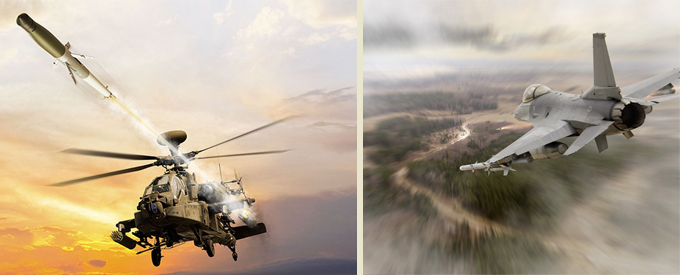2020-06-14
Precision Strikes with APKWS Laser-Guided Rockets
To support the national defence strategy of the U.S., BAE Systems has continued to focus on delivering effective and cost-efficient precision munitions. For instance, APKWS laser-guided rockets are important for the U.S. Department of Defense (DoD) and its allies around the globe. They enable warfighters to make economical, precision strikes.
The APKWS rocket bridges the gap between unguided rockets and anti-armour munitions, consistently delivering pinpoint accuracy to soft targets at a low cost.
APKWS rockets are assembled by adding innovative guidance kits to Hydra rockets, which existed for decades as unguided munitions. The APKWS guidance kit works with new and stockpiled fuses, warheads, and rocket motors, and doesn’t require modifications to rocket components, launchers, or firing platforms.
Moreover, transforming Hydra rockets into precision munitions requires minimal training and the rockets are easy to use – effectively point and shoot.
High Accuracy
There are other precision-guided weapons on the market, but few consistently hit their intended target with pinpoint accuracy, while leaving minimal collateral damage. The guidance section is designed to lock onto targets from over 3 kilometres away, keeping the aircraft and laser designators at a safe distance from threats.
Innovative by design, the APKWS rocket includes advanced DASALS seeker optics located on all four guidance wings. Once fired, the wings deploy, and the optics lock in, guiding the rocket to the target – delivering accuracy when it matters most. The Wing slot seals protect optics from adjacent firings, sand, and moisture prior to launch to ensure no damage or debris inhibit the seeker from locking onto targets.
Optics can lock onto moving or stationary targets in open or confined areas, supporting a wide variety of missions, and eliminating the possibility of a lost or uncontrolled rocket after launch. The 40-degree field of regard enables a broad capture area for the rocket to adjust mid-flight and stay on track to its target.
Mission Flexibility
In combat, the APKWS rocket has achieved over a 93 per cent hit rate when fired from rotary- and fixed-wing platforms. In fact, it is the most accurate precision guided weapon in its class, exceeding programme requirements. That is just part of why the APKWS is utilised by all four branches of the U.S. armed forces, as well as numerous allied countries.
APKWS is the only U.S. Government Programme of Record for 70 mm (2.75 in) precision-guided rockets. BAE Systems sells APKWS rockets via a contract with the U.S. Navy, which provides units to all branches of the U.S. military and to foreign allies through the Foreign Military Sales (FMS) process. The U.S. Navy recently signed an indefinite delivery indefinite quantity (IDIQ) multi-year contract for US$2.68 billion in support of high domestic and international demand. FMS activities support more than a dozen partner nations and interest from other nations.
BAE Systems delivered more than 35,000 units by the end of 2019, and expects to deliver 18,000 in 2020. The company and its supply chain are equipped to produce 25,000 annually in order to satisfy potential orders received under the U.S. Navy’s IDIQ contract. The company is also investing in product advancements, including multiple system upgrades designed to improve the weapon’s flexibility, range, and lethality.
The rockets are qualified on 17 of the world’s most prolific military aircraft, including the Cobra and Apache attack helicopters and F-16 and F/A-18 fighter jets. Demonstrated firing platforms include domestic and international attack helicopters, multinational fighter jets, unmanned aerial vehicles, and vertical take-off and landing platforms.
Cruise Missile Defence
APKWS rockets are also demonstrating their mission flexibility against high-speed targets. In December 2019, the U.S. Air Force demonstrated APKWS rockets as viable munitions to perform cruise missile defence (CMD). “The test was unprecedented and will shape the future of how the Air Force executes CMD,” said Col. Ryan Messer, commander of the 53d Wing at Eglin. The munition is a fraction of the cost of the missile commonly used for cruise missile defence, can be loaded faster, and aircraft can carry more of them.”
“There will always be a need for a low-cost precision rocket to give the warfighter a less expensive, lower collateral damage option in multi-domain operations for increased stowed kills to maximise the number of aim points neutralised per mission,” said John Watkins, vice president of Precision Strike at BAE Systems.
Reference Text/Photo:


No Comments